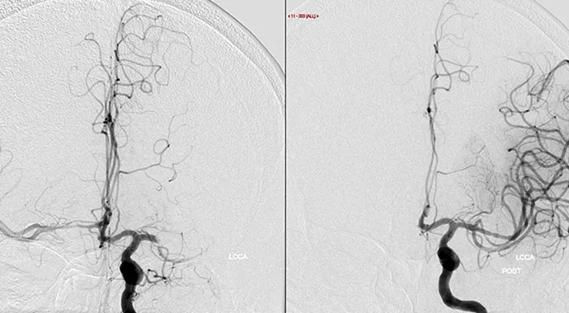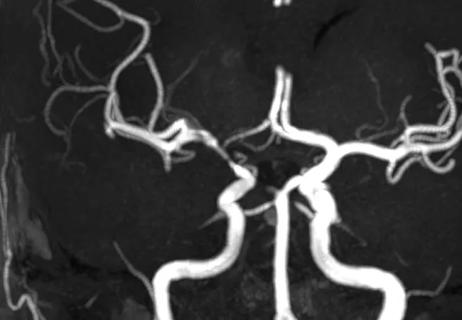Findings from large cohort analysis can guide ongoing quality improvement initiatives

In the United States, rural hospitals use thrombolytic treatment for patients with ischemic stroke less often than urban hospitals do and have slower average time to treatment. Additionally, rural stroke centers match urban stroke centers and exceed rural non-stroke centers in the provision of secondary stroke treatment. These are among key findings of a retrospective cohort study of patients treated for acute ischemic stroke at Get With The Guidelines (GWTG)-Stroke hospitals.
Advertisement
Cleveland Clinic is a non-profit academic medical center. Advertising on our site helps support our mission. We do not endorse non-Cleveland Clinic products or services. Policy
The study was published in Stroke by a Cleveland Clinic-led research team.
“This analysis provides the first comprehensive assessment of thrombolytic treatment, secondary stroke prevention and other guideline-recommended stroke care metrics in rural hospitals,” says corresponding author Shumei Man, MD, PhD, Director of the Thrombectomy-Capable Stroke Center at Cleveland Clinic Fairview Hospital. “Focused efforts are needed to help rural hospitals provide timely thrombolytic treatment for eligible patients, and our findings can help guide these efforts in a targeted way.”
Previous data have established that U.S. stroke incidence is higher in rural than in urban areas and that stroke patients in rural areas receive less thrombolytic therapy and have higher case fatality compared with their urban counterparts. However, previous studies have not adequately factored in time to presentation following stroke symptom onset and have not evaluated modifiable process metrics in acute stroke care.
“The questions are whether rural hospitals provide less care and what processes can be improved,” Dr. Man says. “We undertook this study to systematically assess rural hospitals in providing guideline-recommended stroke treatments and to identify specific opportunities to improve care.”
She and colleagues from Cleveland Clinic and UCLA Medical Center used the national GWTG-Stroke database to identify all adults treated for acute ischemic stroke at hospitals participating in the database from January 2017 through December 2019.
Advertisement
They set out to determine the following primary outcomes according to hospital location (urban vs. rural) and whether or not hospitals were stroke centers:
Also assessed were additional speed-of-treatment metrics, various safety and efficacy metrics, and use of secondary stroke prevention measures (i.e., antiplatelets and statins, anticoagulation for atrial arrhythmias and smoking cessation interventions). Multivariable mixed-effect logistic regression was used to adjust for stroke severity and patient- and hospital-level characteristics.
Among 1.1 million eligible patients identified, 692,839 had sufficiently complete data for inclusion in the analysis. Of these, 31,492 patients (4.5%) were treated at 378 rural hospitals (81 stroke centers and 297 non-stroke centers) and 661,347 patients (95.5%) were treated at 1,820 urban hospitals (966 stroke centers and 854 non-stroke centers). Median values on the NIH Stroke Scale were comparable between patients treated at rural versus urban hospitals.
The main results of the analysis included the following:
Advertisement
The differences in process metrics between rural and urban hospitals were greater before multivariable adjustment, with hospital characteristics — particularly hospital size — having the greatest impact on comparisons in the adjusted model. The study authors note that a greater share of rural hospitals are small and nonteaching hospitals, which they write “may explain the significant attenuation of rural-urban differences after adjusting for hospital characteristics.”
“Our study has yielded novel data on modifiable gaps in processes of stroke care between rural and urban hospitals and also among different rural hospitals,” Dr. Man observes. “Unlike prior investigations, this study evaluated differences in the care processes that lead to the previously established barriers to stroke care in rural communities. These include missed opportunities for timely thrombolytic treatment, interventions for secondary prevention and inpatient rehabilitation.”
She and her co-authors write that these care gaps can be overcome by focused quality initiatives, as has been demonstrated by GWTG-Stroke hospitals in Target: Stroke national quality initiatives. They note that the American Heart Association recently started a three-year rural initiative to grant cost-free access to GWTG quality programs to as many as 700 rural hospitals.
“Our study provides specific and actionable data to guide these and other efforts to enhance rural stroke care and health access in the U.S. and beyond,” Dr. Man concludes.
Advertisement
Advertisement

New analyses confirm preservation of ablation outcomes, broaden data on bleeding benefits

Increasing treatment options are extending the window for continued functional gains

Study links large artery atherosclerosis and delayed presentation to poorer treatment results

$3.2 million grant will fund use of calcium-based imaging to record neuronal activity in ischemia model

Analysis of STS/ACC TVT Registry finds greatest benefit in patients with prior stroke

Insights and what’s next for the first U.S. mobile stroke unit to treat patients

Combining quantitative vessel wall MRI metrics, CSF abnormalities and neurologic symptoms can be highly predictive

Research to test clinical efficacy and cost-effectiveness versus standard-of-care rehab